Rizzoli's Ex Libris
In this issue, with the support of the company, Shelf Awareness focuses on Rizzoli's imprint Ex Libris, which is publishing its first full list this fall. The stories were written by Shannon McKenna Schmidt.
In this issue, with the support of the company, Shelf Awareness focuses on Rizzoli's imprint Ex Libris, which is publishing its first full list this fall. The stories were written by Shannon McKenna Schmidt.
 Famed for its illustrated books on art, design and fashion to travel, food and popular culture, Rizzoli New York has during the past several years published a limited number of titles under the Ex Libris name. These books feature narrative nonfiction and the occasional novel--"reading books," as they're referred to in Rizzoli vernacular. This fall, the company is offering its first formal Ex Libris list.
Famed for its illustrated books on art, design and fashion to travel, food and popular culture, Rizzoli New York has during the past several years published a limited number of titles under the Ex Libris name. These books feature narrative nonfiction and the occasional novel--"reading books," as they're referred to in Rizzoli vernacular. This fall, the company is offering its first formal Ex Libris list.
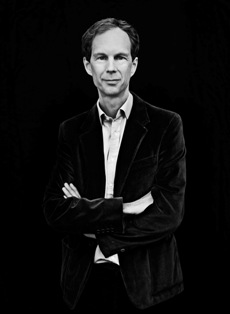 |
|
| Rizzoli v-p and publisher Charles Miers (photo: Stephen Pan) | |
Success with Ex Libris books already published combined with strong sales and distribution backing by Random House helped influence the decision to expand Ex Libris. "We were looking at diversification options, and based on those two factors we decided it was an avenue we should explore," Charles Miers, v-p and publisher, explained. "An added impetus was that more and more of these kinds of books were coming our way."
Senior editor Alessandra Lusardi added: "There are narrative stories dying to be told and translated and published for this very passionate readership that Rizzoli knows how to reach."
Ex Libris books are sourced from RCS Libri, its parent company in Milan, Italy, and other overseas publishers, as well as acquired from U.S. agents and authors. Like Rizzoli's illustrated lines, Ex Libris has an international flair, with titles by authors writing in English, Italian and French. "It doesn't matter what language they're originally written in, there are stories out there that people want to read," Lusardi said.

Another upcoming Ex Libris offering is The Consolations of the Forest: Alone in a Cabin on the Siberian Taiga by Sylvain Tesson, a French writer Lusardi whom places "squarely in the tradition of Bruce Chatwin or Patrick Leigh Fermor. He's a travel writer, yes, but in this book he's sitting still, and to do it in a place like Siberia is completely fascinating. Although it takes place in this incredibly desolate part of the world, it's so full of life. He is one of the most brilliant observers of nature that I have ever read."
She also mentioned The Many Lives of Miss K: Toto Koopman--Model, Muse, Spy by Jean-Noël Liaut: "You would think it's fiction, but it's all true. Her life really was the juiciest kind of novel," said Lusardi.
Ex Libris will also publish The Reach of Rome: A Journey Through the Lands of the Ancient Empire, Following a Coin by Alberto Angela, a popular host of historical programs in Italy, whose "cinematic" writing makes the Roman Empire come alive for readers. A cross-continental endeavor is Connecticut journalist and lawyer Dial Parrott's The Genius of Venice: Piazza San Marco and the Making of the Republic.
Although text, not visual elements, is the main focus, some Ex Libris offerings showcase illustrations and photographs. "These books maintain Rizzoli's high sense of quality in the way they're produced," noted Miers. "They'll be books that people purchase for themselves but also very much as gifts for others."
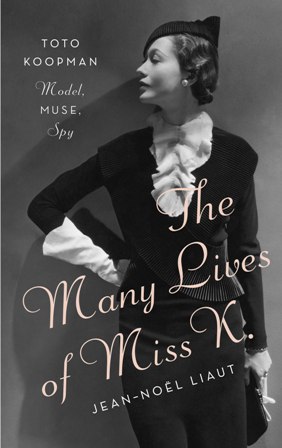
The Many Lives of Miss K: Toto Koopman--Model, Muse, Spy by Jean-Noël Liaut, translated by Denise Raab Jacobs
Toto Koopman might be the most fascinating woman you've never before heard of. Charismatic and beautiful, courageous and freethinking, she was the world's first celebrated bi-racial model and lived a glamorous life in Europe in the 1920s and '30s before becoming a spy for the Allied resistance during World War II. After the war, during which she was interred in a concentration camp, she lived out her life with Erica Brausen, the German art dealer who launched Francis Bacon's career.
Author Jean-Noël Liaut pursues the enigmatic Toto through the myriad roles she inhabited, both happy and tragic. With The Many Lives of Miss K, he gives her a long-awaited place in the pantheon of iconoclastic women, conveying on every page her independent spirit and inimitable audacity and style.
 The Consolations of the Forest: Alone in a Cabin on the Siberian Taiga by Sylvain Tesson, translated by Linda Coverdale
The Consolations of the Forest: Alone in a Cabin on the Siberian Taiga by Sylvain Tesson, translated by Linda Coverdale
A Thoreau-like quest for solace, taken to the extreme, leads writer and traveler Sylvain Tesson to a cabin on Siberia's Lake Baikal, where he has only his thoughts, a couple of canines, books and a vodka stash for company. In The Consolations of the Forest, he ruminates on leaving modern life behind and rediscovering the luxury of solitude.
Tesson also shares his deep appreciation for the harsh but beautiful Siberian landscape, the resilient men and women who populate it and the bizarre and tragic history that has given it an almost mythological place in the imagination. Full of observation, introspection and humor, The Consolations of the Forest turns an experiment in isolation into an adventure accessible to all.
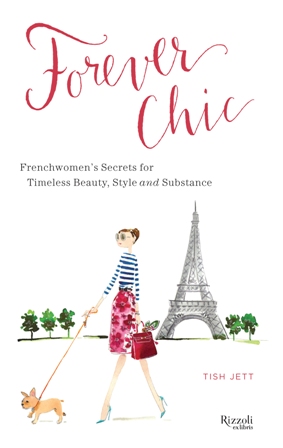 Forever Chic: Frenchwomen's Secrets for Timeless Beauty, Style, and Substance by Tish Jett (October 15)
Forever Chic: Frenchwomen's Secrets for Timeless Beauty, Style, and Substance by Tish Jett (October 15)
Fascinated by the timeless chic and joie de vivre that Frenchwomen radiate even as they move into middle age and beyond, Tish Jett set out to uncover their secrets. A journalist and blogger who has lived in France for years, she dishes on what she discovered about beauty, make-up, coiffures, dressing well, choosing accessories, dieting, exercise and more.
Not only do Frenchwomen know how to accentuate their strengths and camouflage their flaws (and they never obsess about them), Jett reveals that the true key to their lasting allure is continuing to educate themselves, staying culturally aware and holding their own in lively conversation. With Forever Chic, American women have at their fingertips an insightful guide to emulating their fashionable French counterparts.
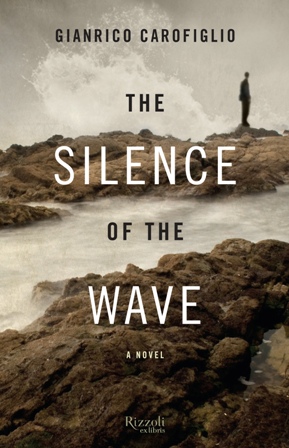 The Silence of the Wave by Gianrico Carofiglio, translated by Howard Curtis
The Silence of the Wave by Gianrico Carofiglio, translated by Howard Curtis
Bestselling Italian crime writer Gianrico Carofiglio took a break from his series featuring defense lawyer Guido Guerrieri to turn out this standalone novel. Former undercover narcotics agent Roberto Marías' past has left him devastated and numb. Visits with his psychiatrist, regular hypnotic strolls through Rome and a chance encounter with a woman named Emma begin to painfully revive him. Then, when 11-year-old Giacomo pleads for help in conquering his nightmares, Roberto at last achieves a rebirth, personally and professionally.
 The Reach of Rome: A Journey Through the Lands of the Ancient Empire, Following a Coin by Alberto Angela, translated by Gregory Conti (October 15)
The Reach of Rome: A Journey Through the Lands of the Ancient Empire, Following a Coin by Alberto Angela, translated by Gregory Conti (October 15)
At its zenith, the Roman Empire stretched from Scotland to the Persian Gulf, from the Sahara to the North Sea. What was life like in the Empire, and how were such diverse peoples and places united under one rule? The Reach of Rome explores these questions through an ingenious lens: the path of a single coin as it changes hands throughout the Empire's vast realms in the year 115.
Through lively, detailed vignettes based on archeological and historical evidence, Alberto Angela brings this long-ago era to life in an entertaining, accessible way. He ventures into every corner of the Roman Empire, introducing its people and revealing its remarkable modernity. By focusing on aspects of daily life so often overlooked in more academic treatments, The Reach of Rome shows us a world that was in some ways not so different from our own.
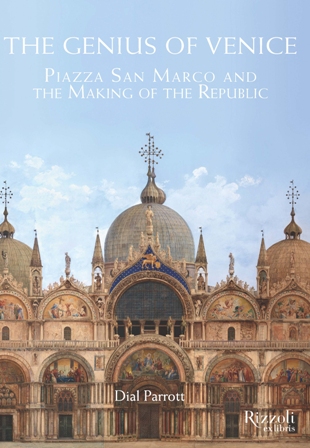 The Genius of Venice: Piazza San Marco and the Making of the Republic by Dial Parrott
The Genius of Venice: Piazza San Marco and the Making of the Republic by Dial Parrott
Of Venice's many majestic spaces, none is as momentous as the Piazza San Marco. In this celebration of the city's oldest and most significant architectural site, Dial Parrott presents the Piazza's extraordinary edifices, among them Saint Mark's Basilica and the Marciana Library, and tells the history of the Republic.
From a lagoon, the bold and calculating Venetians forged a city that is not merely an international attraction but a testament to architectural genius: the epitome of what we now call New Urbanism and a shining example of Western communal art. Featuring more than 100 color photographs, this beautiful, authoritative volume is for architecture aficionados, armchair travelers and anyone enraptured by Venice.

From the epic poets of antiquity to contemporary writers of science fiction, storytellers through the ages have conjured imaginary worlds, projecting onto them human dreams, ideals and fears. In this erudite, entertaining book, renowned writer and cultural critic Umberto Eco takes readers on a beautifully illustrated journey through the mythical lands in Homer's poems, Tolkien's tales, Alice in Wonderland, Marco Polo's Books of the Marvels and other works.
Eco shows us the inhabitants of these legendary places, the passions that rule them, their heroes and antagonists and, above all, the importance they hold for us. As be brings together disparate elements of a shared literary legacy, he sheds light on why writers are compelled to create these worlds--and why readers are drawn to them.
 Umberto Eco speaks about his upcoming title, The Book of Legendary Lands, which will be published November 19.
Umberto Eco speaks about his upcoming title, The Book of Legendary Lands, which will be published November 19.
Why do you focus on imaginary lands?
This book is not concerned with fictional places alone. There are excellent dictionaries of fictional places, and if I had to describe the infinite places told by narrators of every time, from the islands of Gulliver to the house of Madame Bovary, I would have needed hundreds and hundreds of pages. I am dealing instead with those places that many people believed to have really existed, like the Earthly Paradise or Atlantis. Occasionally I mention fictional places, but only when they have been "reconstructed" for touristic purposes, like Sherlock Holmes's apartment on Baker Street.
What appeals to you about imaginary lands?
I have always been fascinated by fakes and forgeries. I have dedicated to this subject many academic papers and a book that in America was entitled Travels in Hyperreality and in Great Britain appeared as Faith in Fakes. Once I wrote an essay about the "Force of False," that is, telling about historical events that have been created by imaginary documents. The letter of Prester John, a fake produced in the Middle Ages, speaking of a Christian empire existing in the Far East (and later in Africa), encouraged many travelers and explorers to visit unknown lands to find the kingdom. Some of the results of false documents were positive, others tragically negative: the forgery called The Protocols of the Elders of Zion contributed to the Holocaust.

Many legends have been created about things that perhaps really happened. It is still debated if Atlantis truly existed in prehistoric times; it is not impossible. I am interested in the force of this legend that circulated and still circulates both among serious researchers and among mystery hunters. Other legendary lands stemmed from human desires, like the Eldorado with its fountain of eternal youth. Many travelers were convinced it existed and identified it with the newfound American territories. Their faith in the legend led to real explorations.
What about these lands appeals to you?
It is the story of human illusions and the desperate wish of human beings to believe in something better than the actual world. A typical case is the story of Rennes-le-Chateau, still visited by the readers of Dan Brown. It has been definitely demonstrated even by French tribunals that everything was due to a hoax concocted by a certain Plantard, starting from few disconnected rumors about the deed of a priest of this village in the Nineteenth Century. But authors like Baigent, Leigh and Lincoln produced a book (The Holy Blood and the Holy Grail) about the legend that was immensely popular and that probably inspired The Da Vinci Code. The whole story of Rennes-le-Chateau is a contemporary legend, but all the visitors still going there are a reality, thus witnessing the power of our illusions.
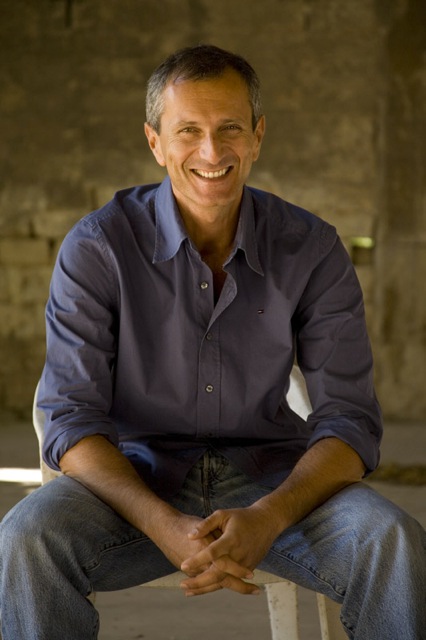 Gianrico Carofiglio is the author of the forthcoming Silence of the Wave, which stands alone from his bestselling series starring defense lawyer Guido Guerrieri.
Gianrico Carofiglio is the author of the forthcoming Silence of the Wave, which stands alone from his bestselling series starring defense lawyer Guido Guerrieri.
On your nightstand now:
Antifragile by Nassim Nicholas Taleb. I had already read his previous books--Fooled by Randomness and The Black Swan--and very much appreciated them. This book, and the others by Taleb, is about how our lives are influenced by randomness and how we can gain advantage from understanding this truth.
Favorite book when you were a child:
White Fang by Jack London. Because of the great adventure, because of the animals (I love animals, especially dogs), because it was the first real reading of my life. I loved all of the book.
Your top five authors:
Franz Kafka, George Simenon, John Steinbeck, Italo Calvino and Thomas Mann.
Book you've faked reading:
Finnegans Wake by James Joyce. I always talk about this book as if I have read it. Nobody, until now, has unmasked me, for the simple reason that nobody (that I have met until now) has really read this book.
Book you're an evangelist for:
Stoner by John Williams. I discovered the author and the book last year. It's the story of an ordinary man and nothing special, apparently, happens. Nonetheless the book is a page turner because of the incredibly deep insight of the author.
 Book you've bought for the cover:
Book you've bought for the cover:
Loneliness by John Cacioppo and William Patrick. The cover was so essential and at the same time meaningful and fortunately also the book was good....
Books that changed your life:
White Fang by Jack London, The Adventures of Tom Sawyer by Mark Twain, Les Miserables by Victor Hugo, Zen and the Art of Motorcycle Maintenance by Robert Pirsig, Il Cavaliere Inesistente (The Nonexistent Knight) by Italo Calvino, The Little Prince by Antoine de Saint-Exupéry, but most importantly, A Moveable Feast by Ernst Hemingway. It was when reading this book that probably I really decided that I wanted to be a writer.
Favorite line from a book:
"All this happened, more or less." --Kurt Vonnegut, Slaughterhouse-Five
Book you most want to read again for the first time:
Three Men in a Boat (To Say Nothing of the Dog) by Jerome K. Jerome, I will hardly laugh so much again in my life!